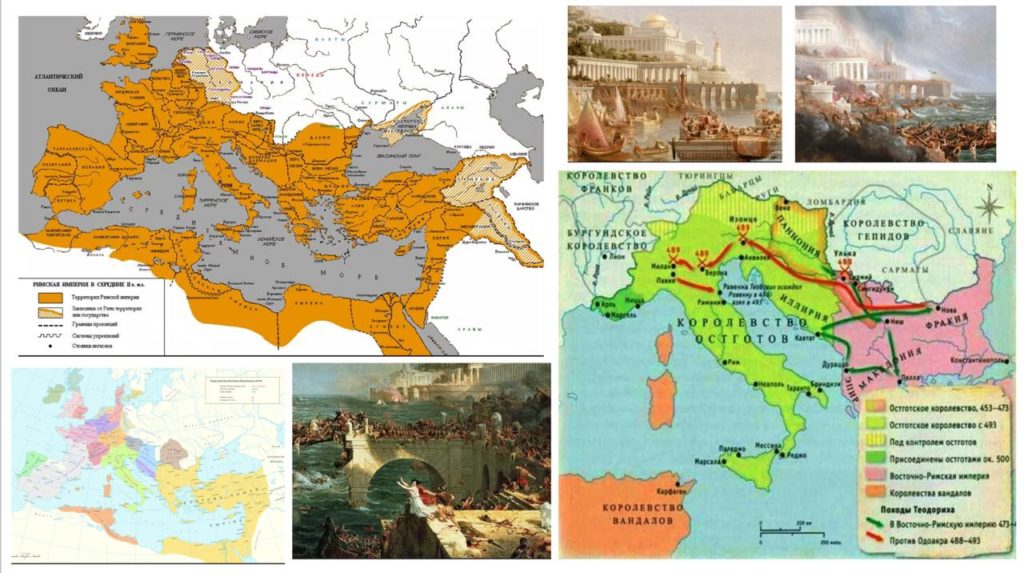
Modern historians believe that the fall of the Roman Empire is a process that the citizens of the empire perceived not as a sudden collapse, but as gradual changes over several centuries. Let’s consider how the economy changed in the Roman territories in the 5th-7th centuries and who became the new rulers of these lands.
Formally, it is generally accepted that the Roman Empire ceased to exist in 476. Now we would say that this happened as a result of a military coup, since the last official emperor of Rome, Romulus Augustus, was overthrown by the leader of a part of the Roman troops formed from barbarian tribes that entered the service of the Empire – the so-called “federates”.
It is important to note that the western part of the Roman Empire ceased to exist in its previous form. The eastern part, with its center in Constantinople, existed for about a thousand years.
Economic changes in the Roman territories
Italy under the Ostrogoths and Lombards: After the reign of Odoacer, the same leader of the federates who overthrew the last emperor, Italy came under the control of the Ostrogoths under Theodoric the Great (493-526). The Italian economy of this period was characterized by the preservation of the Roman tax system and the restoration of agriculture. Theodoric supported the restoration of cities and infrastructure, which contributed to the economic recovery.
In the 6th century, the Lombards invaded Italy, creating the Lombard Kingdom. The economy under the Lombards was also based on agriculture, but with a lesser degree of urbanization. The Lombards actively developed trade, especially with the Eastern Roman Empire – Byzantium.
Visigoths in Spain: The Visigoths founded their kingdom in Spain, consolidating their power by the 6th century. The economy of Visigothic Spain was mixed, combining Roman administrative practices with new agricultural methods. The Visigoths supported local production and trade, which contributed to the stability and prosperity of the region.
Franks in Gaul: The Franks, led by Clovis I (466-511), created the Frankish Kingdom in what is now France. The Franks had an agrarian economy, but they also actively developed crafts and trade. The Frankish kingdom became a center for the exchange of goods between northern and southern Europe.
Vandals in North Africa: The Vandals captured Carthage in 439 and created a powerful kingdom in North Africa. The economy of Vandal Africa was agrarian, but they also controlled maritime trade in the Mediterranean. The Vandals maintained trade links with Byzantium and other regions, which contributed to economic stability.
The new rulers of the Roman territories brought about significant changes in the economy:
- Ostrogoths and Lombards: Preserved the Roman tax system and infrastructure, contributed to the restoration of agriculture and trade.
- Visigoths: Introduced new agricultural methods and supported local production and trade.
- Franks: Developed an agricultural economy, crafts and trade, facilitated the exchange of goods between different regions of Europe.
- Vandals: Controlled maritime trade in the Mediterranean, supported agricultural production and trade links.
Thus, the fall of the Roman Empire was perceived by its citizens as a gradual process of change, rather than a collapse like the Third Reich. Economic structures and trade networks continued to function, adapting to new conditions.
The new rulers of the Roman territories, such as the Ostrogoths, Visigoths, Franks and Vandals, adopted many Roman traditions and administrative structures, contributing to the economic stability and development of their kingdoms.
For ordinary people, peasants, artisans, even estate owners, only the rulers and the boundaries between territories actually changed, which, over the course of a generation, affected trade and travel more than everyday life.